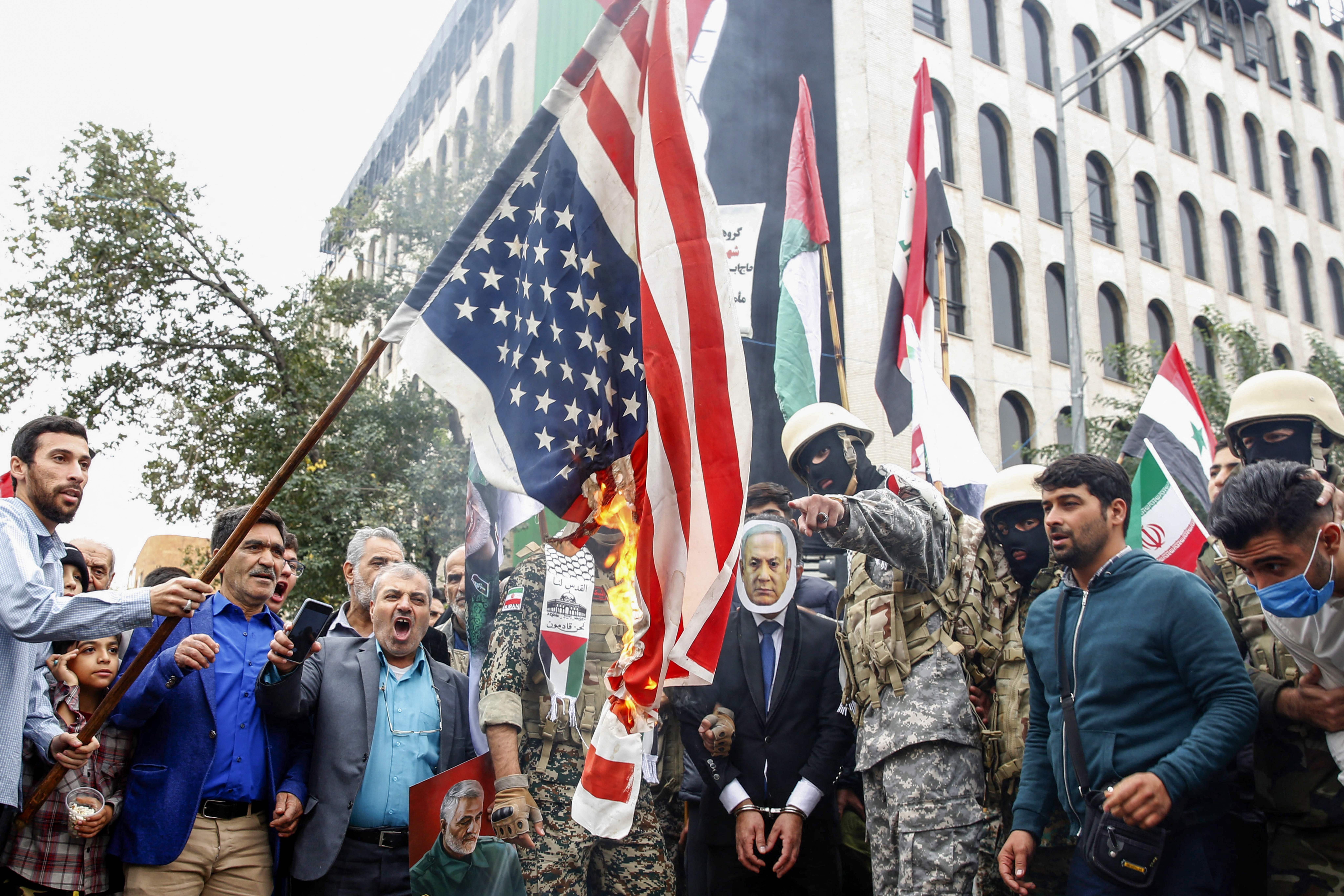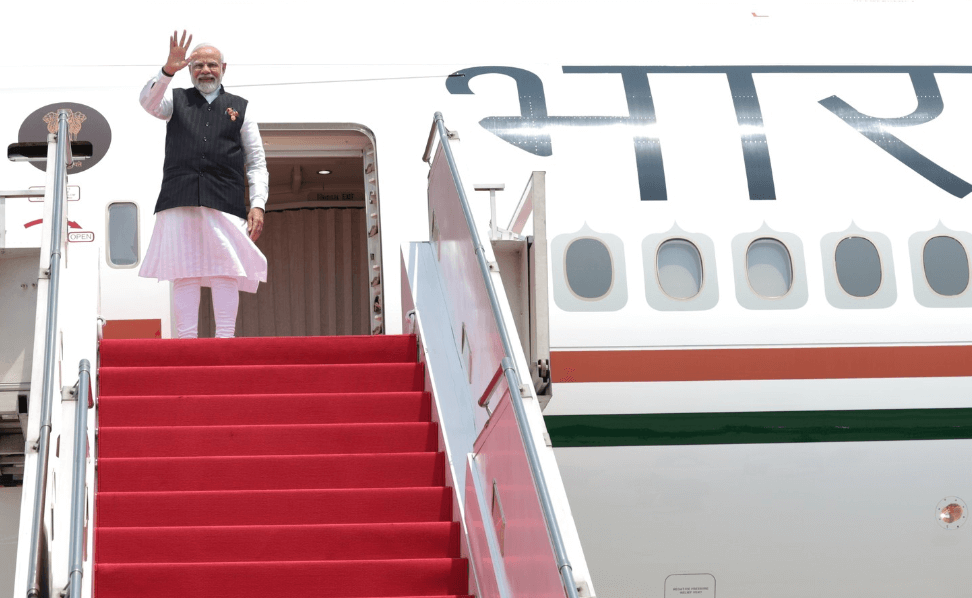Has Biden Considered Having an Iran Strategy?
We can quibble on what counts as a strategy, but keeping a challenge off the president’s desk is not one.

When I asked the U.S. official what President Joe Biden’s Iran strategy is, I was immediately met with laughter. Then, the official said, “You know, a lot of people inside the administration ask that same question. Sometimes they ask it on the first day. Sometimes they ask it six months later.”
I have an answer for them: There is no Biden strategy for Iran.
If he wants to end the growing chaos in the Middle East, he might want to come up with one.
The Islamist regime in Tehran is, by many measures, at the root of much of the destabilization across the Middle East and more of a threat to U.S. interests than ever before. Iran is on the verge of obtaining a nuclear bomb. Its proxy militias are spreading mayhem outside its borders. It has stomped out internal revolts, and — as shown by its recent attack on Israel — the regime’s ballistic missile program is going strong.
But for most of Biden’s time as president, his aides’ No. 1 goal hasn’t been to solve this puzzle, but to keep it off the president’s desk.
“The strategy is to keep it on low boil on all fronts — nuclear, regional, whatever. That’s been the approach for some time now,” said a second U.S. official, who, like several other people I spoke to for this column, is familiar with U.S. Middle East policy and was granted anonymity to discuss a sensitive issue.
People in Washington have good-faith disagreements on how to define “strategy,” and many use the term generically. I’ve heard plenty of policymakers grumble about how documents labeled as strategies aren’t truly strategies. But those are abstract debates that often fail to address urgent and concrete foreign policy challenges.
I’ve come to believe that if the end goal of your effort isn’t to solve a problem, then you don’t have a strategy.
So when policy wonks use words like “containment,” “de-escalation,” “deterrence” and “risk management” to describe Biden’s approach to Iran, I hear only tactics, not strategies.
He believes Iran is a problem, but doesn’t appear to have a coherent plan for how to solve it.
During Barack Obama’s presidency, the administration wanted to solve the problem of Iran’s growing nuclear program. It also had a way to reach that goal: sanctions and diplomacy combined, an effort it inherited from George W. Bush’s team.
The strategy worked, and the Iran nuclear deal was born.
Many observers said the deal wasn’t good enough, and some questioned what Obama’s real strategy was about. Some accused him of wanting overall rapprochement with Iran, a longtime U.S. nemesis.
There’s no question Obama hoped that a nuclear agreement could lead to overall better relations with Iran, but my reporting suggests that was mostly a hope and not part of the strategy.
Donald Trump helped kill both the Obama administration strategy and the hope it had engendered by abandoning the nuclear deal.
But give Trump some credit: He had a strategy of his own.
His administration’s stated goal was to change the regime’s behavior, not the regime. The behavior changes the administration demanded were so fundamental, though, that they amounted to seeking a new regime, and thus, in theory, solving a problem. The tactic was “maximum pressure” — a heavy dose of sanctions and other penalties targeting Tehran.
Obviously, that strategy did not work.
Biden took office with a half-hearted goal of reviving the nuclear deal, and a less-than-ideal strategy to achieve it.
He put several conditions on the goal, such as insisting that Iran had to agree to discuss a future tougher, longer-lasting deal. He also took so long to get the ball rolling on talks that the revival effort was hobbled even before a new hardliner Iranian government arrived with its own demands.
Since its effort to resuscitate the original deal collapsed, the Biden team has resorted to scoring partial wins where they can with Iran.
They brought home several Americans detained in Iran, even though that required a tradeoff Republicans called a ransom. They verbally and through technological efforts backed a stunning but brief protest movement in Iran.
They’ve also largely kept the sanctions that Trump had reimposed on Iran after quitting the nuclear deal. But, because they’ve willingly limited enforcement, or for reasons beyond their control, the sanctions have not hurt Iran enough to significantly change its behavior. Its oil exports are up.
When I survey the Biden administration’s Iran policies, it’s clear it isn’t formally calling for regime change. (Remember, even Trump wouldn’t officially touch that political third rail.)
But Biden’s crew doesn’t seem willing to even say it wants to fundamentally change the regime’s behavior. At most, such as in the administration’s National Security Strategy, it uses terms like “deter” or “counter” in its few references to Iran.
It is managing a problem, not trying to solve it.
It’s likely that the Biden administration has decided there’s no realistic, direct way to “solve” Iran. And it is undeniably a hard problem.
The issue also has become so politically toxic in Washington — similar to immigration — that even engaging with Tehran now draws rebukes. Another challenge: China and Russia, which once cooperated with the U.S. on certain Iran policies, are now helping Tehran evade U.S. sanctions, in part because of their own tensions with America.
Maybe the administration believes that some other strategy will have an nth order effect that will lead to a lasting change in Iran.
That appears to be one reason why, even in the wake of the Oct. 7 Hamas attack on Israel, Biden and his aides are still pursuing their grander vision of “regional integration” for the Middle East.
This is an actual Biden administration strategy. The problem it ostensibly aims to solve is friction between Israel and Arab states, through a variety of economic, security, diplomatic and other arrangements. The combined aerial defense mechanisms that downed the Iranian missiles and drones targeting Israel this past weekend illustrated the nascent idea.
The U.S. hopes to see Saudi Arabia and Israel establish diplomatic relations, Washington and Riyadh enter a security pact, and Israel agree to a pathway for a Palestinian state. These pieces all depend on the others, and the people pushing them might as well buy a lottery ticket.
White House National Security Council spokesperson Adrienne Watson pointed to elements of this regional integration strategy in a comment for this column.
“We don’t do policy by bumper stickers,” Watson said. “We focus on actually degrading Iran’s capabilities, while strengthening those of our partners and allies.”
One could generously call regional integration an Iran strategy, because by putting Iran’s regional adversaries, in particular the Saudis and the Israelis, on the same side, that certainly raises the regional pressure on Tehran.
I’m not that generous.
The Middle East is too fractured and complicated for the United States to hope that a regional integration strategy might some day, maybe, lead to a fundamental change in Iran. Even Saudi Arabia has tried to mend some battered ties with Tehran as it has sought a new arrangement with Israel.
Arab anger with Iran also is unlikely to offset anger with Israel over the war in Gaza, at least not anytime soon.
The Islamic Republic of Iran could face a transition soon: Supreme Leader Ali Khamenei is in his 80s and frail.
A Biden strategy on Iran could find an opening there — a leadership change is always a moment of vulnerability for a dictatorship.
If there were a strategy.
What's Your Reaction?





















































